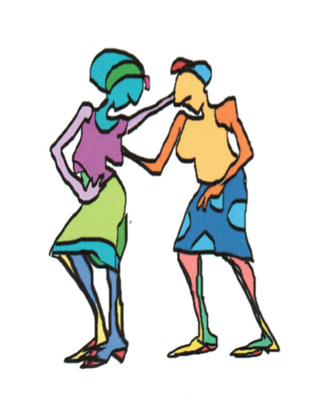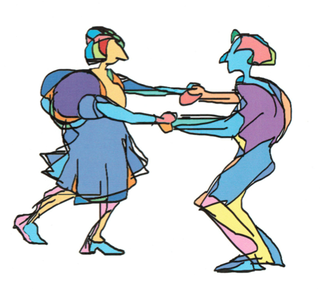Neuroscience
#MeToo—Changing Brains, Relationships and Power Dynamics
Looking at the #MeToo movement through the lens of relational neuroscience.
Posted January 15, 2018
The #MeToo movement is giving a viral voice to women (and men) who have been the targets of violence and harassment. It is a social change campaign that I never thought would happen in my lifetime. Honestly, when it first started to spread on Facebook I thought it might be cathartic for the people who joined, but I didn’t anticipate it having wider social change potential. My bad—because I temporarily forgot about relational neuroscience and the power that can be unleashed when groups of individuals come together and support one another.

What does the #MeToo movement look like through the lens of relational neuroscience? A few studies come to mind that might help shed some light on interpersonal dynamics across power differences. Check-out "The Cookie Monster Study" as described by Dacher Keltner and his colleagues at University of California at Berkeley.
For those too busy to watch the five-minute video, here is a summary of the study. The researchers brought three individuals to the social science lab and told one of them that they were in charge—essentially giving that person power over the other two. While the group was busy with the assigned task of writing boring university policy, the researchers brought out a plate of four cookies. Initially, each of the three participants ate one cookie each, leaving one on the plate. Interestingly, most of the trime, the person given the power eventually ate the fourth cookie. In Dr. Keltner's study taking the fourth cookie correlated with having power and also with a decrease in activity of the mirror neuron system (the circuits in your brain that produce empathy and allow appreciation of the impact of your actions on others). Further, as the researchers watched the behavior of those given power, they observed that the people in charge ate differently. They chewed with their mouths open and occasionally had little pieces of food dropping out of their mouths. Dr. Keltner describes this change in the level of interpersonal awareness as the "paradox of power"—the qualities that often bring someone to power, like empathy and the ability to listen to others, diminish once a person is in power.
Kelner's research and theory suggests that for many people simply having power over others decreases the activity in the part of the brain needed to understand the impact of your behavior on others. Just the opposite of what is needed to be an engaged, respectful leader.
The potential corrupting and disconnecting impact of power is an enormous problem in Western societies where success is often culturally prescribed as gaining power over others and obtaining more resources than those around you. In the US, the myth of individual success is promoted in business, politics, and sports. This model of capitalism is great for making money but not great at creating cooperative, balanced human beings. In fact, one of the "benefits" of making it to the top of the power hierarchy has been a blissful ability to do whatever you want to whomever you want, and because your empathy pathways may be immobilized by power you don’t have to feel the pain you are causing. Essentially, the abuse of power goes hand in hand with power over others, the dominant organizational model in our country. Because power over environments is everywhere, most people have witnessed power abuse at work or family gatherings, in religious communities and on sports teams. Sexual harassment and abuse has been and continues to be ubiquitous which makes the rather sudden rise of the #MeToo movement all the more stunning.
Another important study focuses on how we connect across difference. When you engage with someone similar to you (it is your perception of similarity that matters, not any real characteristics that are the same or different) the ventral medial prefrontal cortex activates allowing you to use your mirror neuron system to know the other person by internally mimicking their feelings, thoughts, and behaviors. This intuitive or connected knowing allows you to be seen and known in a way that is deeply soothing to your sympathetic nervous system and your stress response.

On the other hand, when you see someone as being different from you, the mirror neuron system is deactivated and the area of the brain that wakes up is the dorsal medial prefrontal cortex – an area associated with abstract thinking. You know a person you deem as “other” through abstract rules rather than intuition. Cultural expectations or biases are part of the abstract information we all use to understand and know someone who is "different" from us. In the case of women who have been harassed or abused, the “othering” of women may well help to turn off a man's intuition and keep him in a cognitive, distorted understanding of women's experience of being treated as the object of his desire and a subordinate to his dominance.
I have heard many pundits questioning why the #MeToo participants are speaking up now after so many years suggesting that it is a sign of political expediency. But that shows little understanding of the real impact these assaults have on people. Victims of sexual abuse or harassment who have been locked in a state of powerlessness without a voice have a malignant process going on in their minds and bodies. A woman may become trapped in the position of powerlessness because she needs the job to take care of a family, or because she is told explicitly that if she tells anyone the people she loves will be hurt. In other situations the shame and blame of the woman's victimization is placed directly on her shoulders – because she let herself want the job, or let herself be in the same room with the perpetrator, or because she dressed in such a way, or walked in such a way or talked in such a way as to ask for this mistreatment. These stories are very old and very deep in the female psyche.
For some, the abuse releases a cascade of chemical reactions in their bodies and brains that results in chronic PTSD. Just as a war veteran cannot escape the horrors of war, many women cannot escape the horrors of their abuse and harassment. Neuroimaging studies of people with PTSD tell us a few important things that might help us understand the 'why did it take so long'. The human brain is designed with balance. The thinking or cognitive part of the brain (the prefrontal cortex) sends lots of inhibitory pathways to the feeling part of the brain (the amygdala). When a person has PTSD and is replaying episodes of violence over and over again, her amygdala is red hot with fear so her day-to-day life is dominated by terror. On top of this, the area of the brain that would allow a person with PTSD to be able to inhibit this wild fear (the prefrontal cortex) is less active. It is as if the brain has determined that being hypervigilant to the next injury or attack trumps everything (pun intended). And finally, one study looking at the area of the brain that forms words (Broca’s area) found that when a person is acutely triggered, there is less blood flow and less ability to speak – literally. Taken together, these studies shift the question to "how in the world are so many women speaking out about harassment and abuse for the first time"?
That question, I believe, is best explained by the power of connection. In a classic experiment on “why it hurts to be left out” Eisenberger and Lieberman explored what happens in the brains of people being socially excluded. The experiment was rather simple. People enter a lab where they are connected to a functional imaging machine and instructed to play computer ball toss with a couple other people. Over time, that person is left out of the game. Now, admittedly, this is not a major social exclusion—it is not racism or homophobia, it is not objectification of another because of sex, class or any other defining characteristic. But, surprisingly, the researchers found that most people being left out “felt bad” and the worse they felt by the social exclusion the more the dorsal anterior cingulate cortex fired. This area of the brain is the exact same area of the brain that is activated by the distress of physical pain. This point is crucial—human beings operate best when they are in safe communities of connection and it is so important that the alarm system for being left out is the exact same alarm system for being sick or injured. When another human being is abused, objectified, shamed and told that they are the reason for all of it, they are essentially pushed out of human experience—they are socially excluded and they are in pain. Real, live, deep and dark pain. Usually, that pain is not seen or acknowledged by the person causing it and often overlooked by those around them.
The #MeToo movement, which broke the cycle of painful isolation, started when a well-known white actress challenged women to simply name their experience on Facebook by typing #MeToo. One by one, women added there voice to the movement. I imagine that each person who has become a part of this group is feeling a concrete lessening of their isolation and powerlessness, a soothing of the pain pathways and maybe, for the first time a lessening of the burden they have carried-alone.
But for some, the movement has been more isolating. One critique of #MeToo is that it is not capturing the real pain of women of color - ironic but not surprising. Ironic because the movement started eleven years ago by Tarana Burke who was trying to amplify the voices of young women of color who had been sexually exploited and abused. Not surprising given the studies that show the pain that people of color experience is often underrated and underappreciated by white, dominant group members. There is a danger of intensifying these painful dynamics if the original voices of women of color get drowned out or disappeared by the larger cultural narrative. The #MeToo movement will only be successful when it amplifies all voices.
My mentor and colleague, Jean Baker Miller offered a compelling redefinition of power. Relational power, as she called it, was “the capacity to produce change…to facilitate movement…to induce responsiveness. To move and be moved by another”. #MeTo is relational power in action and it is helping our culture redefine the structures of power. It is no longer ok to use others for your own power or sexual gratification.
I am not naïve. I do not think the #MeToo movement will shift all power dynamics but I am impressed by the uniformity of responses I have heard from friends and colleagues. Just the other night I had a conversation with a female friend, a doctor and head of a prestigious medical department in Boston. A woman with visible power. She reacted to the ongoing revelations about sexual abuse and harassment the way almost every woman I talk with does, “#MeToo—duh!" Her statement captured what most women know—being exposed to these grotesque displays of power dominance is a regular part of being female in the world—at least in any world I have been apart of and I don’t expect it to stop because a number of highly powerful men have been outed for abusive, boorish and at times criminal behavior. However, I do feel confident that there is no shoving this reality back in the closet. This new movement has allowed women to find their voices and to reclaim their dignity. In doing so they have shed shame, blame and pain simply by joining a group of women and men speaking out against the abuse of power. I am honored to be a part the movement. #MeToo!




